Year-End Giving Inspiration
For those looking to discover new charitable organizations to support, we present a handful of local groups worth considering that we guarantee will speak to the hearts of everyone
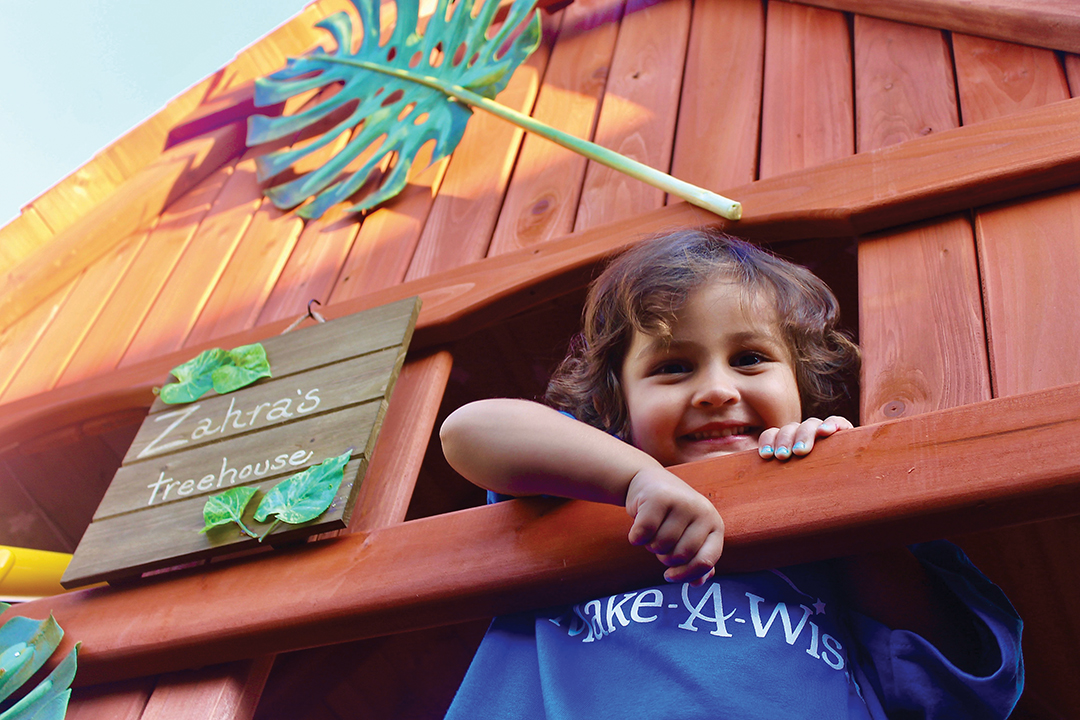
The “Season of Giving” is here, and not just because it’s time to exchange gifts with loved ones and offer tokens of gratitude to those who’ve provided valued services over the year. For many of us, it’s also a time when we look to extend that generosity to people (or animals, or even places) beyond our immediate circle. With so many worthy organizations dependent on community support in the best of times, let alone in a pandemic, it can be overwhelming to try to choose just one, or to cast your net wider to include additional causes beyond those that are already near to your heart. But still, it’s exciting to discover — or rediscover — organizations led by like-minded people that make the giving all the more rewarding.
Maybe you know you have even more to give, whether by financial support or your valuable time, or maybe it’s a desire to uncover something completely unlike anything else you may already support. Perhaps it’s just simple curiosity. But if, for any number of reasons, you might be looking for new ways to give, here is a handful of local groups we think are pretty great places to start.
The Classic
Just a few years shy of 70, I Love A Clean San Diego has led the charge in education and volunteerism for environmental action in our region for generations. Its famous coastal cleanups are signature events, but they are just one way the organization tackles its mission to create awareness of the challenges beyond just our coastline. “I Love A Clean San Diego stands for ‘I Love A Clean San Diego County,’” says Ian Monahan, ILACSD’s director of marketing and philanthropy. “That’s actually our official name. We do our best to serve as many communities as we can throughout the region.”
In addition to creating and managing hundreds of cleanups countywide annually, the organization’s focus is teaching the importance — and the positive impact — of living a lower waste lifestyle. According to Monahan, ILACSD conducts nearly 800 K-12 presentations a year in county schools in addition to adult education and corporate programs for businesses looking to reduce their waste. “Everything that we do is around education and action to result in behavior change,” explains Monahan. “One of the main challenges we are trying to address is the problem of plastics in the consumer waste stream. Single use plastic is a pollutant. It infects our waterways, our creeks, our beaches, our oceans. So, we try to show people in little incremental ways how to make changes in their lives, and I think that’s really where our education and action comes into play. Even the smallest step in the right direction can lead to bigger things.”

One particular initiative, Kids Ocean Day, provides education on marine life and marine pollution, culminating in a cleanup at the beach. “Sometimes we hear from some of these kids that they have never seen the beach, even though they live in San Diego,” marvels Monahan. “That’s how impactful these things can be — when you can tie a young person from the education to the issue and give them an experience that they haven’t had before, that’s memorable, and that’s going to stick with somebody.”
Ultimately, says Monahan, the vision is to create “zero waste” living in our region, but he doesn’t want the concept to scare anyone away. “‘Zero waste’ may seem like an overwhelming term,” he says, “but what we’re trying to do is say, ‘Here are the small steps that you can achieve right now that will help down the road as you begin to increase these behaviors in your lifestyle.’” cleansd.org
The Heartwarmer
Some nonprofits are bona fide household names. But how often do we circle back and ask: What are they doing now? It’s a very relevant question for Make-A-Wish San Diego, the beloved organization whose sole mission since its chapter was founded in 1983 is to make dreams come true for kids suffering from critical illness in San Diego and Imperial Counties. The pandemic has thrown a wrench into the celebrity meet-and-greets and trips to magical theme parks that we so often associate with Make-A-Wish. And now, for the chapter that’s granted roughly 4,700 wishes since it began at a pace of about 220 per year on average, they’ve got about 350 kids in the process of receiving a wish.
“It’s not because we’re not granting wishes, it’s because it’s gotten significantly more complicated,” explains Suzanne Husby, CEO of Make-A-Wish San Diego, which is one of a network of chapters within the national organization with presence in every state in the U.S. “So many kids historically have wished to travel, get on an airplane, go to a theme park or a sporting event, and those really aren’t an option during a pandemic. We’ve had to get really creative and take our cues from our kids, of course, and reimagine the way we grant wishes.”

Husby, whose 18-year tenure at Make-A-Wish San Diego began with an intern position, says that these days they’re granting a lot more “home-based” wishes, from computer gaming systems to whimsical play structures to even hot tubs for the whole family to enjoy. “One of the things I love about those wishes is that a lot of our kids, even regardless of a pandemic, don’t get to go to school every day, and they have to miss out on a typical childhood because of what they’re dealing with due to their illness. So, to enhance their backyard or their bedroom kind of makes them the hub of their neighborhood, [where] kids want to come to their house and play. Wishes of that nature touch my heart because it’s ongoing joy — it’s daily joy — for our kids,” she says.
She goes on to explain how these wishes, in their home-based forms, have created new opportunities for the community to offer support. “We need things that you might not associate with Make-A-Wish, like concrete vendors…or maybe we need someone who is an expert landscaper to help us make a really great space to prep for a play structure, or someone who is a computer whiz to help us set up a brand-new gaming computer. So, even if folks aren’t able to write a check, there’s really a lot of ways to get involved with skill sets,” says Husby.
She says that the true impact of each wish granted goes far deeper than the wish itself. “It’s the feeling of control that a child doesn’t have when they’re dealing with an illness,” she explains. “When Make-A-Wish comes in, we don’t talk about their illness. We know why they’re here; that’s not our focus. We want to get to know the child, to empower them, put them in the driver’s seat by asking, ‘What makes you happy? What makes you excited? What would be your best day ever?’ That’s when the impact of a wish starts. It’s right when they’re asked the question and they get to actually speak up for themselves.” wish.org/sandiego
The Small But Not Forgotten
When Fenella Speece gathered a few “like-minded ladies” together in 1998 to rescue small animals like guinea pigs and hamsters, it was because, despite there being plenty of dog and cat rescues, there wasn’t really any formal organization helping with what she calls “the little ones.” However, she says with a warm laugh, “Once you step into that quagmire, unfortunately you really can’t get out.” Their volunteer-based organization, Wee Companions, became an official 501(c)(3) nonprofit in 2003.

The pandemic brought a wave of both surrenders as well as adoptions due to changes impacting people’s lifestyles, from working from home to housing insecurity. “Our numbers were very high for adoption during 2020 even though our intake was the highest that we’ve ever had; it kind of all balanced out,” recalls Speece, the organization’s president. “We were very busy taking in and then very busy adopting out.” Then, the world opened back up. A clause in the Wee Companions adoption contract promises that if, during any time in the animal’s life an adopter would like to relinquish it, it can be returned. And unfortunately, they’re being returned in record numbers. According to Speece, they’ve had to take 135 animal returns to date in this year alone. “They are coming in droves,” she laments, adding that for the first time, the organization is having to refuse requests from other shelters, from San Francisco to Los Angeles to Palm Springs, to take in animals. “We’ve never known this before, and I consider it collateral damage from COVID-19,” she says solemnly.
With roughly 250 animals in their care, Speece welcomes donations of food in addition to financial support. A store located in University City sells gently used items for small animal owners to supplement operational costs. But most importantly, says Speece, “What we’re looking for are people who have the same philosophy as we do who want to give a permanent home to a small animal that they have well researched and are willing to provide the correct habitat and the correct care for their lifetime. We need committed adopters and loving homes for these animals.” weecompanions.org
The Quintessential San Diego
In a military town known for its beach-centric lifestyle, what could be more “San Diego” than a nonprofit committed to helping injured veterans enjoy surfing? That’s precisely the mission of One More Wave, an organization created by veteran Alex West that provides custom surfboards and gear for wounded and disabled veterans.
“Balboa Naval Hospital does a surf clinic every Thursday morning, so many of us would volunteer while we were still on active duty at the clinic,” says Rob Garnett, One More Wave’s director of surf operations. “There were a couple guys who would come through with pretty several physical injuries and nobody was making boards that they could use, so that’s how it started.” It began with a custom board created for someone who was a below-the-knee amputee and about a year later, in 2015, One More Wave was launched as a resource for veterans with any disability to receive equipment including a board, wetsuit, and board bag, plus any repairs or replacements, at zero cost to them.
With no one specializing at the time in custom boards for amputees, those with traumatic brain injuries that impacted balance, or other injuries, One More Wave partnered with trusted shapers they’d worked with for their own standard boards. “Honestly, it’s been a ‘learn as we go’ [process], and each person is different, so it might take us three or four boards to get it right,” says Garnett. “We get in the water with the person we’re making the board for to see where they’re at, and then we have some testing boards that we use, and then figure it out from there.” Working with a partner artist, recipients can also customize their board. “A lot of them have brain injuries you can’t see,” says Garnett. “The art therapy can be very helpful to them. They’re working through something that might be very personal to them; it’s pretty impactful. We spend more time on art with those who may be dealing with these issues — PTS, anxiety, depression — as opposed to people who need a true adaptive board.” In all, the cost of each package is about $2,500.

Though the creation of the board may be therapeutic, “our therapy is just getting out and surfing, and just the community,” says Garnett. On the third Saturday of every month, rain or shine, the group meets to surf off of 17th Street in Del Mar from 7 to 10am. “We have what we call ‘Third Saturdays’ all over the U.S., in Hawaii, on the East Coast, Florida, and Texas, and that just gives us more opportunity to go surf as a group. We also use [texting app] GroupMe and have regional threads within that which enables people to connect, keeping people from isolating and staying home,” he says. “Many people with PTS might isolate, but if you’ve got some other folks who you might go surf with, it makes people ‘get off the couch,’ we like to say.”
The organization, which is dependent on donations to fulfill requests, aims to help between 100 and 200 veterans annually. Challenges from the pandemic have hampered their ability to fundraise, so their primary mission is to continue supporting its established chapters before expanding further. “We’re really focused on excellent support for the people we have, and then expanding, absolutely, but we’re not in a big rush to go super big,” says Garnett. “We want to keep it very personal for everybody.” onemorewave.com
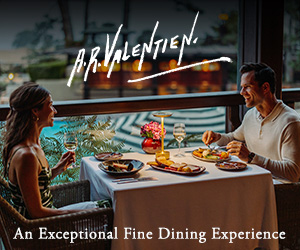
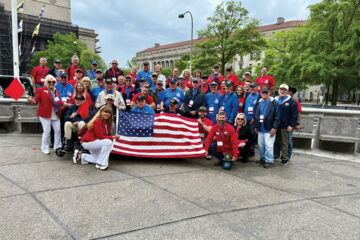
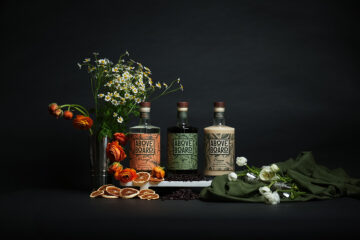
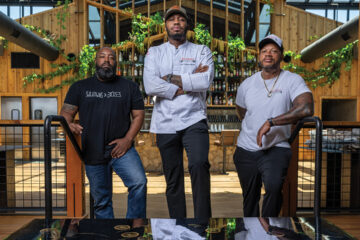
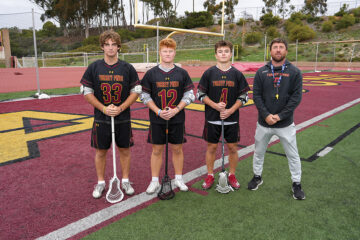
Comments